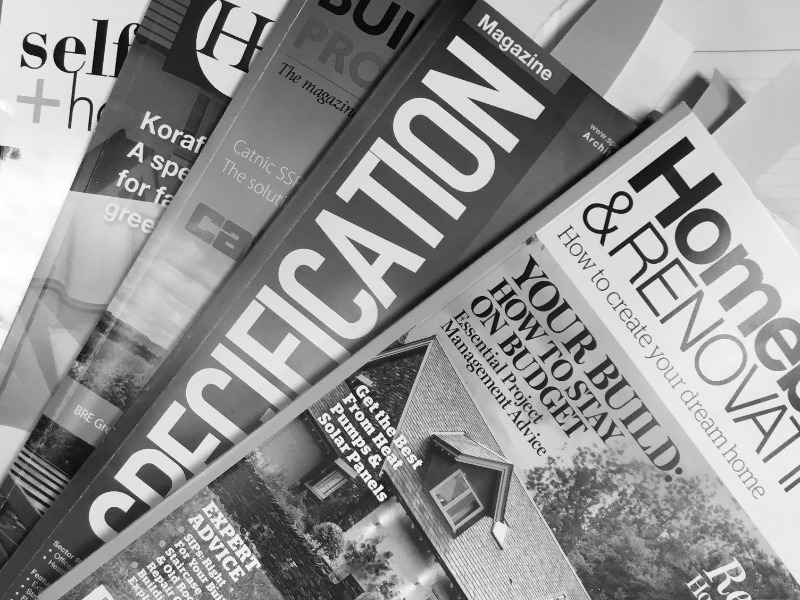Why we think printed magazines are as relevant today as they have ever been!

Figures published in 2017 by The Publishers Association show that sales of e-books had dropped by 17% while sales of printed books were up by 8%. In 2016, spending on books was up by £89m on the previous year and this has continued to increase. Indeed, Waterstones has posted increasing profits, with sales rising by 4 per cent in 2016.
At one time, it was feared that the rise of digital books and purchase of Kindles would destroy traditional bookshops, however what we are increasingly seeing is digital sales on the decline. Experts have claimed the fact that readers physically connect more closely with a book than an e-book as one of the main reasons for this.
This trend is not, however, being reflected in magazine sales, as according to Press Gazette, most UK magazines lost sales year on year in the first half of 2017. Out of the consumer magazines, however some did increase their sales, including Prospect, The Spectator and Private Eye, whilst some of the biggest fallers were women’s magazines including Look, Woman and Heat, which were down 35, 17 and 16 per cent respectively.
From a business to business point of view, it’s more difficult to find out how the trade magazines, such as in construction and manufacturing sectors, are performing as their results are not widely publicised. However, it is heartening to see some new entrants into the market, such as Public Sector News and the Trade Contractor, with many of the magazine groups that publish trade titles releasing both printed and digital versions in the last 12 months, rather than discontinuing their printed versions.
We were recently asked at a pitch for a new construction client how much of our efforts in terms of percentages would be devoted to print magazines and how much to digital. The answer here is not so clear cut, as all what we do is to generate content for our clients in both printed and digital formats. It is often the case that we start out with a printed magazine in mind and target that magazine’s editor to secure inclusion. Most printed magazines these days have digital versions too, so we always ask the editors if our article can be included on their websites or in their e-newsletters, with a link back to our clients’ site. For some magazines, there may be a small charge for this, but it does mean that the client can benefit from a large number of hits to their website from the article.
A few years ago, as with printed books, the trade magazines were worried about digital taking over and were questioning whether there was a future for the printed publication. What many magazines do very cleverly at the moment, such as Housebuilder and Developer and Architects Datafile, is to alert readers to when a printed magazine is being issued and send subscribers the digital magazine beforehand. After a quick flick through the digital issues, this means we can find articles that we have written for clients and these are usually included on the magazines’ website so generate traffic to our clients’ sites. When the printed magazine does arrive in our office then the article can easily be found and presented to our client at the next meeting. In my experience there are very few clients in the construction and manufacturing sector who would say they prefer to receive an e-magazine rather than a printed version.
There is a danger at the moment that some marketing companies recommend that clients put all their budget into digital and very little or none into print. This can be a huge mistake and what we have seen work best is when the digital version is used to enhance the release of the printed version. Both have value in raising awareness and generating enquiries. E-newsletters and in fact any mailings will be affected from May onwards, when the GDPR legislation comes into play.
It will mean that anyone looking to send an e-newsletter or e-magazine will need permission from the recipient to do so. This could cause a short term reduction in e-newsletters and online magazines as digital publishers grapple with meeting the legislation, however we think this will only be a temporary dip. We believe that although some printed magazines have lost ground in the last few years, as have regional newspapers, there will always be a need for quality content, in whatever format is most accessible. We predict that the use of digital magazines will continue to rise, as print costs increase, however the real quality printed trade magazines, whether that be architecture, building, manufacturing or regional business, will continue to influence buyers, specifiers and end users and are therefore still of great value.
If you are looking for PR b2b specialists in both printed and digital media, please talk to the Dragonfly PR team! We are a friendly bunch of South Yorkshire Public Relations professionals with a wealth of experience in construction, manufacturing and business to business PR and marketing campaigns. We’d love to hear from you and to help you raise awareness and achieve your objectives in 2018, please email hello@dragonflypr.co.uk or call 01709 300130.
